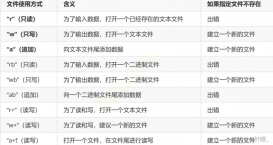模板
由于模板元編程需要以面向對象為基礎,所以如有疑問之處可以先補充一點C++面向對象的知識:
C++面向對象這一篇就夠了
泛型初步
由于C++是靜態強類型語言,所以變量一經創建,則類型不得更改。如果我們希望創建一種應用廣泛地復數類型,那么相應地需要基于int、float、double這些基礎類型逐一創建,十分麻煩。泛型編程便是為了簡化這一過程而生。
能夠容納不同數據類型作為成員的類被成為模板類,其基本方法為在類聲明的上面加上一行模板聲明代碼
template<typename T>,下一行為class myClass,其調用過程為myClass<T> m。
列舉案例如下
|
1
2
3
4
5
6
7
8
9
10
11
12
13
14
15
16
17
18
19
20
21
22
23
24
25
26
27
|
#include<iostream>using namespace std;template<typename C>struct Abstract{ C real; //real為C類型 C im; Abstract(C inReal, C inIm){ real = inReal; im = inIm; } void printVal(){ cout<<"Abstract:"<<real<<"+"<<im<<"i"<<endl; }; Abstract& multi(Abstract val){ C temp = real*val.real - im*val.im; im = real*val.real + im*val.im; real = temp; return *this; };};int main(){ Abstract<float> fTemp{1,2};//C類型為float fTemp.multi(fTemp); fTemp.printVal(); system("pause"); return 0;} |
函數模板
當然,上述multi并不能實現兩個不同類型的Abstract之間的相乘,所以可以將multi函數改為
|
1
2
3
4
5
6
7
|
template<typename T>Abstract<C>& multi(Abstract<T> val){ C temp = real*val.real - im*val.im; im = real*val.real + im*val.im; real = temp; return *this;} |
這樣就能夠實現如下功能。
|
1
2
3
4
5
6
7
8
9
|
int main(){ Abstract<float> fTemp{1,2}; Abstract<int> iTemp{1,2}; fTemp.multi(iTemp); fTemp.printVal(); getReal(fTemp); system("pause"); return 0;} |
友元
模板類具備一部分普通類的性質,比如struct和class的區別,public、protected、private的性質,以及友元等。模板的聲明特性也可以應用在函數中,例如
|
1
2
3
4
5
6
7
8
9
10
11
12
13
14
15
16
17
18
19
20
21
22
23
24
25
26
27
28
29
30
31
32
33
34
|
#include<iostream>using namespace std;template<typename C>class Abstract{ C real; C im;public: Abstract(C inReal, C inIm){ real = inReal; im = inIm; } void printVal(){ cout<<"Abstract:"<<real<<"+"<<im<<"i"<<endl; }; Abstract& multi(Abstract val){ C temp = real*val.real - im*val.im; im = real*val.real + im*val.im; real = temp; return *this; } template<typename T> friend void getReal(Abstract<T> num); //聲明友元};template<typename C>void getReal(Abstract<C> num){ cout<<num.real<<endl;}int main(){ Abstract<float> fTemp{1,2}; fTemp.multi(fTemp); fTemp.printVal(); getReal(fTemp); system("pause"); return 0;} |
需要注意的一點是,在模板類中聲明友元,其前綴<typename T>中的類型標識不得與已有的類型標識重復,否則編譯無法通過。
由于函數模板可以針對不同的數據類型進行求解操作,是對函數或者方法實例的抽象,所以又被稱為算法。
模板參數
如果將模板理解為一種類型聲明的函數,那么模板也應該具備一些函數具備的功能。首先其模板參數中可以包含實際類型參數,例如
|
1
2
|
template<typename T, int max>class Test{} |
其調用時可以寫為
|
1
|
Test<int,256> pixel; |
模板同樣支持默認參數,即可以實現如下形式
|
1
2
3
|
template<typename T=int, int max=256>class Test{}Test pixle; |
除了數據類型、值之外,模板本身也可以作為模板參數,例如下面的形式是合法的。
|
1
2
3
4
5
6
7
8
9
10
11
12
13
14
|
template<typename T, template<typename> class C>struct Test{ C<T>* val; Test(C<T>* inVal){ val = inVal; }};int main(){ Abstract<int> fTemp{1,2}; Test<int,Abstract> test(&fTemp); test.val->printVal(); system("pause"); return 0;} |
其結果為
|
1
2
3
4
|
PS E:\Code\cpp> g++ .\generic.cppPS E:\Code\cpp> .\a.exeAbstract:1+2i請按任意鍵繼續. . . |
需要注意的一點是,在模板類中定義的模板類,需要進行實例化,否則會出現錯誤,所以在Test中,以指針形式創建了模板類。
類型函數
以數據類型為輸入或輸出的函數即為類型函數,在C語言中,sizeof便是一種類型函數,其輸入為數據類型,輸出為數據類型所需要的內存空間。
在C++11中,using可以實現數據類型賦予的功能,其使用方法與typedef相似
|
1
2
3
4
|
template<typename T>struct Test{ using type = T;} |
元編程的基本概念
元編程是泛型編程的一個超集,兩者的本質均是針對不同數據類型的算法,后者則更關注傳入參數的廣泛性。如果將元編程分為四個層次
- 無計算
- 運算符連接的運算
- 編譯時具備選擇等非遞歸計算
- 編譯時具備遞歸運算
那么泛型編程可以作為第一類元編程,或者說更加關注的是參數的傳入傳出過程,而元編程則更關注不同數據類型的選擇過程。
例如,我們可以實現一個最多包含三個元素的元組Tuple,其思路為,三元元素可以看成是一個二元元組與一個參數的組合;二元元組可以看成是一元元組與參數的組合;一元元組則是一個基本數據類型的變量。在這個元組的實現過程中,除了賦值過程實現泛型之外,也需要判斷當前所實現的元組元素個數,如果其初始化參量為3個時,需要遞歸式地創建變量,直到賦值參數為1個。則其實現如下
|
1
2
3
4
5
6
7
8
9
10
11
12
13
14
15
16
17
18
19
20
21
22
23
24
25
26
27
28
29
30
31
32
33
34
35
36
37
38
39
40
41
42
43
44
45
46
47
48
49
50
51
52
53
54
|
class Nil{};//主模板template<typename T1=Nil, typename T2=Nil, typename T3=Nil>struct Tuple : Tuple<T2,T3>{ T1 x; using Base = Tuple<T2,T3>; //三元元組以二元元組為基礎 //返回值為Tuple<T2,T3>指針類型的base()函數 //static_cast將this轉化為Base*類型 Base* base(){return static_cast<Base*>(this);} const Base* base() const {return static_cast<const Base*>(this);} //構造函數繼承二元元組,在構造本類中x的同時,構造基類Tuple<T2,T3> Tuple(const T1& t1, const T2& t2, const T3& t3) :Base{t2,t3},x{t1}{}};template<typename T1>struct Tuple<T1>{ T1 x;};template<typename T1, typename T2>struct Tuple<T1,T2> : Tuple<T2>{ T1 x; using Base = Tuple<T2>; Base* base(){return static_cast<const Base*>(this);} const Base* base() const {return static_cast<const Base*>(this);} Tuple(const T1& t1,const T2& t2):Base{t2}, x{t1}{}};template<typename T1, typename T2, typename T3>void print_elements(ostream& os, const Tuple<T1,T2,T3>& t){ os<<t.x<<","; print_elements(os,*t.base());}template<typename T1, typename T2>void print_elements(ostream& os, const Tuple<T1,T2>& t){ os<<t.x<<","; print_elements(os,*t.base());}template<typename T1>void print_elements(ostream& os, const Tuple<T1>& t){ os<<t.x;}//運算符重載template<typename T1, typename T2, typename T3>ostream& operator<<(ostream& os, const Tuple<T1,T2,T3>& t){ os<<"{"; print_elements(os,t); os<<"}"; return os;}int main(){ Tuple<int,double,char> x{1,2.5,'a'}; cout<<x<<endl; system("pause"); return 0;} |
其輸出結果為
|
1
2
3
|
PS E:\Code\cpp> g++ .\generic.cppPS E:\Code\cpp> .\a.exe{1,2.5,a} |
可變參數模板
上述實現過程非常繁瑣,而且限制了元組中的元素個數,如果標準庫中用上述的書寫風格,那么標準庫除了這個元組之外也寫不了其他的東西了。好在C++模板提供了可變參數的功能,例如,我們可以先將打印模板函數寫為
|
1
2
3
4
5
6
7
8
9
10
11
12
13
14
15
16
17
|
//typename... T 代表可變參數template<typename T1, typename... T>void print_elements(ostream& os, const Tuple<T1,T...>& t){ os<<t.x<<","; print_elements(os,*t.base());}template<typename T1>void print_elements(ostream& os, const Tuple<T1>& t){ os<<t.x;}template<typename... T>ostream& operator<<(ostream& os, const Tuple<T...>& t){ os<<"{"; print_elements(os,t); os<<"}"; return os;} |
其輸出結果為
|
1
2
3
4
|
PS E:\Code\cpp> g++ .\generic.cppPS E:\Code\cpp> .\a.exe{1,2.5,a}請按任意鍵繼續. . . |
然后將Tuple也做相同的更改
|
1
2
3
4
5
6
7
8
9
10
11
12
13
14
15
16
17
18
19
20
21
22
|
template<typename T1, typename... T>struct Tuple : Tuple<T...>{ T1 x; using Base = Tuple<T...>; //N+1元元組以N元元組為基 Base* base(){return static_cast<Base*>(this);} const Base* base() const {return static_cast<const Base*>(this);} //注意T&...的書寫格式 Tuple(const T1& t1, const T&... t):Base{t...},x{t1}{}};template<typename T>struct Tuple<T>{ T x;};/* print模板*/int main(){ Tuple<string, double,int,char> tt("hello",1.5,1,'a'); cout<<tt<<endl; system("pause"); return 0;} |
其輸出結果為
|
1
2
3
|
PS E:\Code\cpp> g++ .\generic.cppPS E:\Code\cpp> .\a.exe{hello,1.5,1,a} |
以上就是C++元編程語言初步入門詳解的詳細內容,更多關于C++元編程語言初步的資料請關注服務器之家其它相關文章!
原文鏈接:https://blog.csdn.net/m0_37816922/article/details/103781346














